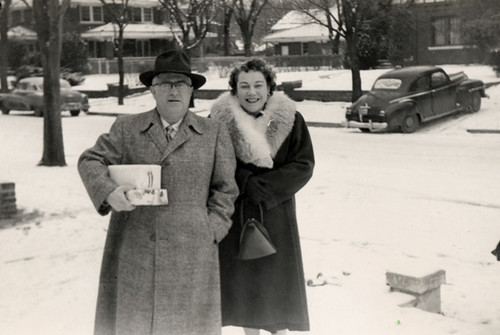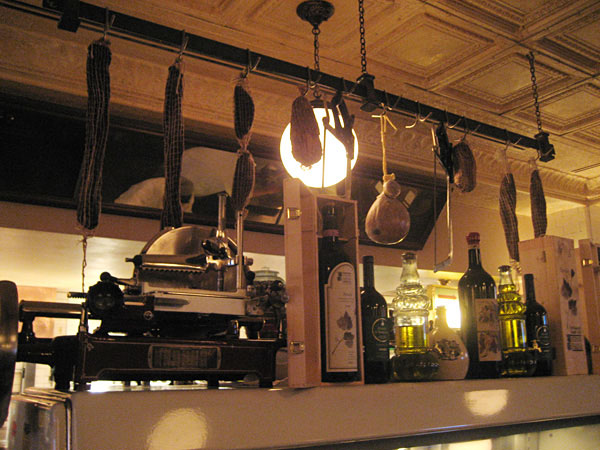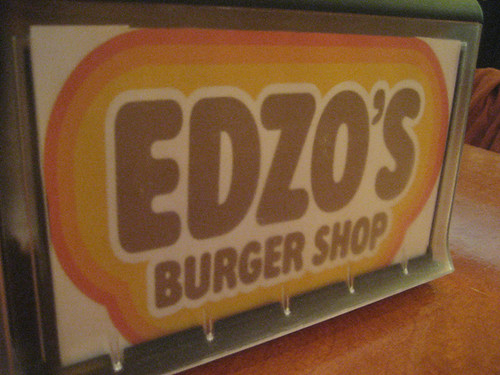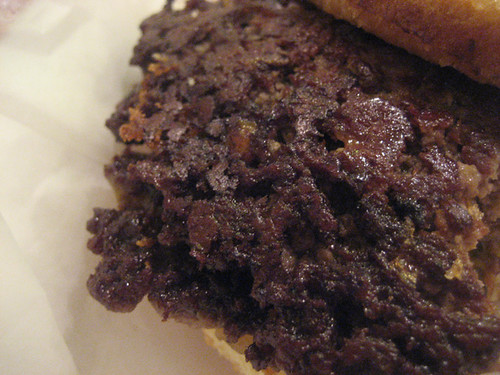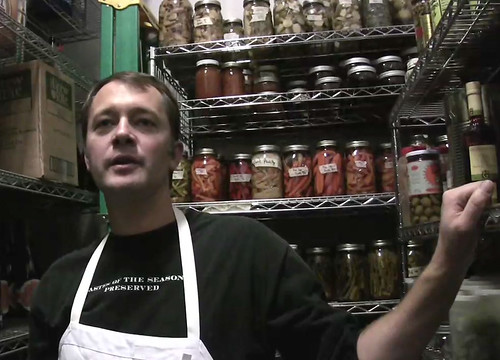Click here to go to part 1.
Now it was time to get to work, recreating my childhood memories— in the kitchen.

Before Cathy arrived to show me the ropes of canning, I did as much prep as I could. I started with the beets. Beets will benefit from almost any logical thing you do to give them a little savory flavor to soak up as you roast them; in this case I vaguely followed this Alton Brown recipe (though the time is never enough; mine roasted for a full hour), coating them in a little oil and tossing them with shallots and a little rosemary I plucked from a plant that never really grew in this weird summer’s weather. But any herb and oniony flavor will be good, enhance their roasted beetiness.
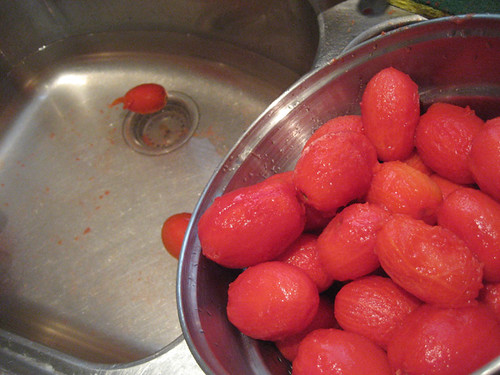
Then I began peeling the tomatoes. Boil water, drop in till the skins start to split, toss into cold water in sink. Considering the half a bushel or whatever I had, it was fast work.
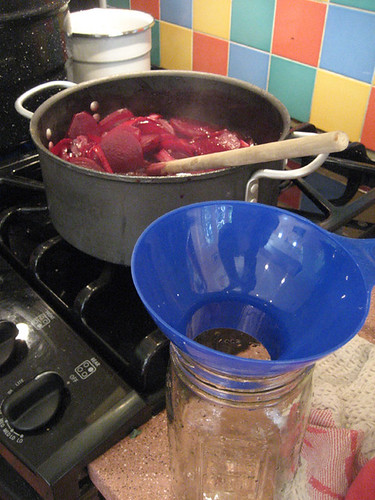
Then the beets went into their bath of vinegary solution. Cathy has a canning kit from Ball which is full of neat little plastic gizmos. The funnel is perfect for not spilling your precious farmstand goodies as you fill the jars…
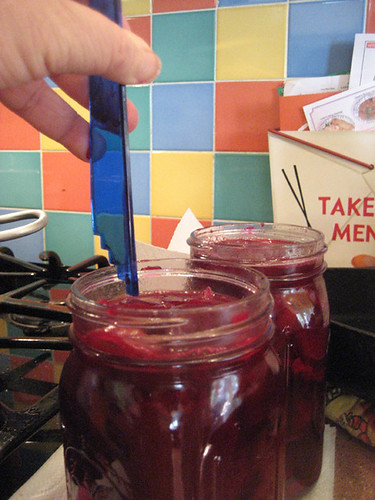
And this device lets you stir air pockets out, then reverses to show you the height of the air space in your filled jar.

And into the steaming inferno they go, to emerge as shelf-stable, pickled beets.
How do you know how much to do some of these things, like the amount of vinegar, the time to boil, the height of air to leave in the jar? Take off your shoes, your Government has it all figured out for you! Just go here, a site actually maintained by the University of Georgia but paid for by your USDA tax dollars, and a few clicks will take you to instructions for the appropriate foodstuff. For instance, beets in a quart jar will take 35 minutes of boiling to be safely canned.
* * *
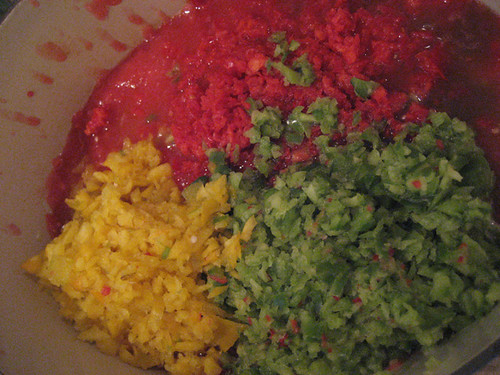
While the beets boil, I turn to the piccalilli. I puree 8 good sized tomatoes, then add 3 sweet red peppers, a yellow and two green peppers.
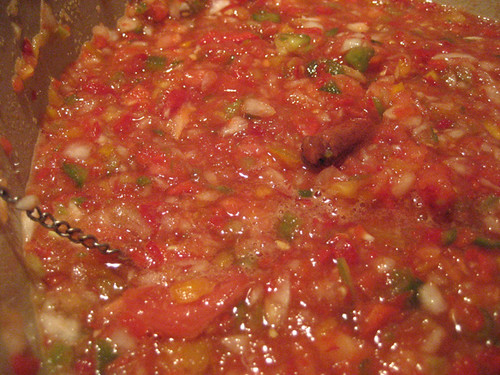
Add some onions and at this point what I have is a pretty nice salsa. I add some cinnamon sticks and allspice in a tea strainer, then half the final vinegar, and begin stewing it all. For the moment, it’s as red as ajvar.
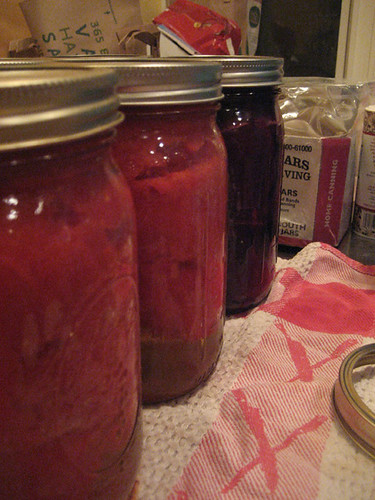
Meanwhile, the beets come out of the canning pot and next go in the Roma tomatoes. Even with lemon juice, they will take 85 minutes, which gives us plenty of time to fiddle with the piccalilli as it stews.
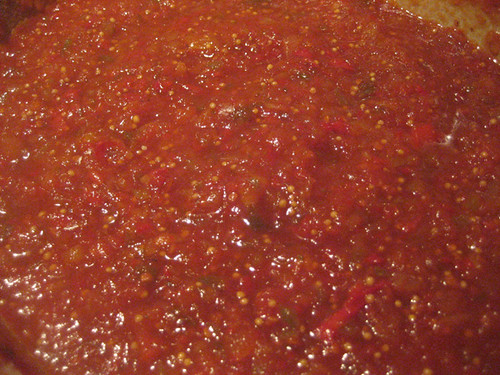
All along, I’m tasting and testing. The cinnamon and allspice begin to appear in the background, making it less like a bowl of stewed tomatoes and more like a sauce. Too much vinegar, but some sugar mellows it a bit, and salt balances the sugar. Slowly, addition by addition, taste by taste and test by test, I get closer to my grandmother’s piccalilli, like a Polaroid slowly developing, revealing long-gone faces as familiar as if you’d seen them yesterday.

That’s Lilly and her mother, who lived into the early 80s, almost to 100. Did the piccalilli recipe come from her? Or was it just something Lilly clipped from a magazine decades ago that she never thought of as a family tradition, and only became one to me because I associated it with her? I’ll never know. (Well, unless I find the recipe card and it turns out to have the clipping stapled to it, I guess.)
Finally, after maybe two hours of stewing and adjusting, it tastes something like my childhood memories—the vinegar too strong still, but it will have a month or more in the jar to mellow. The color isn’t an exact match; maybe she did have green tomatoes, after all, what I remember was definitely a mix of red, green and brown. Growing up, I never even knew there were such things as green tomatoes (that is, as an edible foodstuff) until I was 20 or so, but that doesn’t mean Lilly didn’t.
But the flavor is close, it excites neurons that haven’t tasted this memory in 25 years. It’s not exactly like being in her house again (for that, I’d have to light up a few Winstons), but it’s like a surprisingly sharp picture of one part of it, reminding me of things I haven’t thought of in years. (Of course, to really taste my piccalilli in all its Wichita-1978 glory, I’ll need Wonder bread and Cure 81 ham.)

Just five minutes’ boiling for piccalilli, surprisingly. Then a month or so to mellow.

Not at all a long wait, to have something again for the first time in 25 years. And to pass a little bit of the great-grandmother who died before they were born, to my two boys.
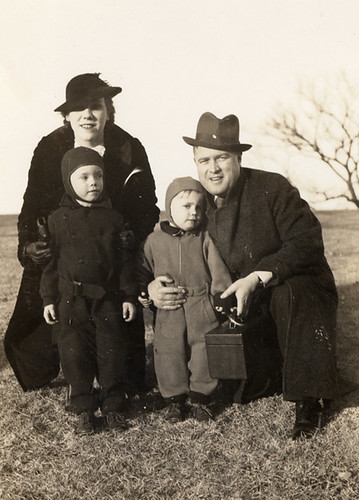
Lilly, my grandfather Al Gebert, my dad and my uncle, c. 1935.
Lilly’s Piccalilli, Version 10.09
8 large ripe tomatoes or equivalent
3 sweet red peppers
3 bell peppers, green or yellow or orange
2 large onions or equivalent
1-3/4 cups sugar
3 cups cider vinegar
3-4 Tbsp salt, to taste
3 cinnamon sticks
1 dozen allspice berries, in cheesecloth bag or tea strainer
1/4 cup mustard seed
1/3 Tbsp celery seed
Peel and core tomatoes, chop coarsely in food processor, and partially drain mixture in a strainer. Chop peppers and onions in food processor to approximate size of pickle relish. Place all in stockpot with cinnamon and allspice and 1-1/2 cups of the vinegar. Bring to a boil and simmer vigorously, reducing liquid considerably, for 1 hour to 1-1/2 hours.
Remove cinnamon and allspice. Add remaining vinegar, sugar, salt, celery seed and mustard seed, as well as powdered cinnamon and allspice to taste. Simmer for 10 minutes. Pour into hot sterilized jars, allowing 1/2 inch headroom in jars. Boil in canner for 5 minutes.



 Posted in
Posted in 















